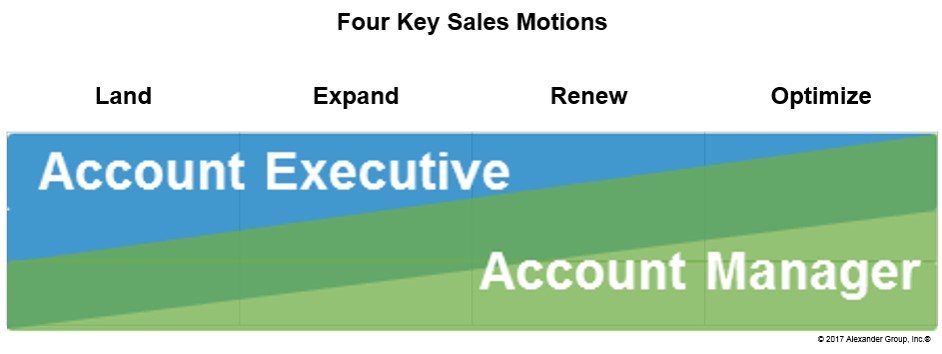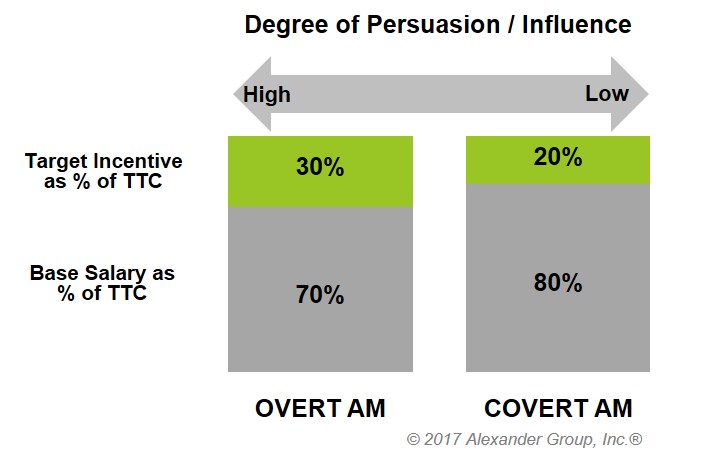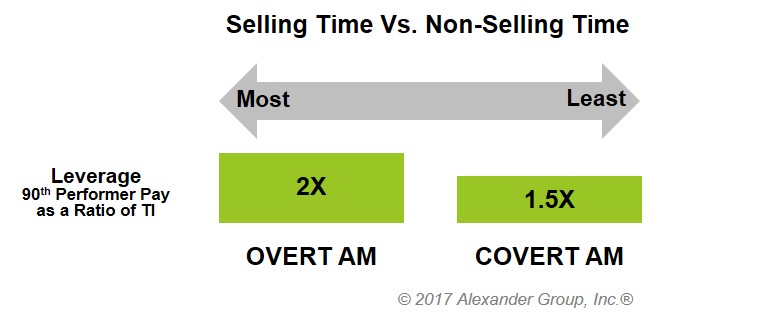Sales Compensation for Covert vs. Overt Account Managers
It is important for media advertising leaders to clearly define their account manager roles. Specifically, are the account managers covert or overt sellers? What does this distinction mean? How does it affect the account manager’s sales compensation plan design? Leaders who clearly articulate the role’s involvement throughout the customer engagement process will improve job focus and can better align their sales compensation plans.
Account Manager Role
Media leaders often pair account managers (AM), who are typically hybrid sales and service roles, with account executives (AE) who are the primary seller and quota owner. AM roles are typically responsible for 1) working with advertising operations to oversee media campaign setup and execution, 2) optimizing media advertising spend, 3) identifying upsell and cross-sell opportunities, and/or 4) working with the AE to develop new customer pitches.
In Media Ad Sales, there are four key sales motions: 1) land new customers, 2) expand business with current customers, 3) renew current deals with current customers, and 4) optimize current media ad spend/campaigns. The chart below includes four key sales motions and a visual representation of the AE and AM time across those four motions. Although both roles play a part across all sales motions, the AE spends more time on land and expand, whereas the AM spends more time on renew and optimize. Leaders ultimately want the AM to focus on managing the daily RFP responses/media optimization so that the AE has time to focus on CMO/budget-maker activities.
Covert Versus Overt Selling Responsibility
When it comes to sales execution, leaders can design either Covert or Overt AMs.
Covert AMs are responsible for identifying/solutioning a sales opportunity, but then passing it off to an AE to close the deal and/or drive incremental spend. Companies use Covert AMs when they need the AM to be a trusted service delivery resource and/or when the AM does not have solid sales skill sets. However, in this model, the AE must spend a significant time focusing on smaller/incremental deals as opposed to CMO/budget-making activities.
Overt AMs are responsible for closing smaller upsell/cross-sell deals and/or driving incremental spend. Companies use Overt AMs when they want their AEs to focus on more CMO/budget-setting activities and when the AMs have true sales capabilities (career path to an AE role). However, Overt AMs are more expensive and can increase the COS if they do not drive incremental revenue.
Sales Compensation Plan Impact
There are four primary sales compensation components to consider when designing AM sales compensation plans:
- Pay Levels – Companies set pay levels using market labor pay data aligned to their pay philosophy and target market. Covert AMs are less expensive than Overt AMs. Companies must ensure that they are mapping to the right market benchmark job when pricing these jobs.
- Pay Mix – Pay Mix is ratio of Base Salary versus Target Incentive (TI) as a percent of Target Total Compensation (TTC). The role’s degree of sales persuasion/influence determines the amount of pay at risk. As the role’s level of persuasion/influence over a sale increases, so should the percent of TTC coming from the TI. As shown in the chart below, Overt AMs tend to have a more aggressive 70/30 pay mix, whereas Covert AMs have less aggressive 80/20 pay mixes.

- Leverage – Leverage is the amount of variable pay awarded to the top 90th percentile performer expressed as a ratio of Target Incentive (e.g., 2X). Most sales roles have a 3X Leverage. Therefore, the more selling time (versus non-selling time like servicing or marketing), the higher leverage a role has. As shown in the chart below, Overt AMs have more sales time and therefore are eligible for a higher Leverage (2X) than Covert AMs (1.5X).

- Measures – Companies typically use two types of measures to reward AM performance within a sales compensation plan:
a. Total Revenue (Overlay Metric): Both Overt and Covert AMs are typically measured on an overlay revenue metric. The AM’s revenue metric is usually based on the AE’s that they are assigned to. However, if there are significant AM and AE re-assignments, companies may opt to use a team revenue measure (e.g., district or manager).
b. Key Sales Objective (KSO): KSOs are effective to measure how an AM executes his/her job and/or when they deploy team revenue measures. Typical AM KSOs include on-time campaign execution, renewal rates and account growth. It is important to be able to measure KSOs in order to implement them effectively.
Successful media advertising companies leverage AM roles to drive revenue growth. First, they need to effectively design the role and then develop the appropriate sales compensation plan. If an AM role evolves from covert selling to overt selling, sales leadership should review their sales compensation plan and update accordingly.
Co-author: Rachel Parrinello is a principal in Alexander Group’s San Francisco office.

Learn More
Learn more about Alexander Group’s Media Advertising practice and how we can help your company meet its revenue growth goals. Contact a media practice leader today.
